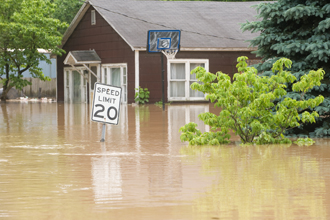Climate Adaptation and Storms & Flooding

EPA works with drinking water, wastewater and stormwater utilities, as well as local, state and tribal governments to help critical water infrastructure facilities prepare for and recover from the impacts of climate change; many of which are considered natural disasters.
Climate change is projected to increase the frequency and intensity of storms in all regions of the U.S. These storms can lead to extreme flooding and other impacts that can overwhelm or damage water infrastructure.
More frequent and intense downpours may threaten to degrade source water quality. Increased stormwater can overwhelm the design capacity of separate and combined stormwater management systems. When this occurs, sewer systems may discharge untreated or partially treated stormwater and sewage directly into nearby water bodies resulting in human health and water quality threats.
Heavier downpours and more frequent and intense storms can also increase flood risk to drinking water and wastewater facilities. Increased flooding can damage treatment processes or distribution and collection system infrastructure and lead to service disruptions. Vulnerable facilities may be forced to protect against greater occurrence of floods or relocate to mitigate risk.
Hurricane intensity is also projected to increase as the climate continues to warm, although the magnitude of this change is uncertain. Stronger storms can lead to greater risk of coastal flooding from storm surge, a risk that will be further amplified by sea level rise.
